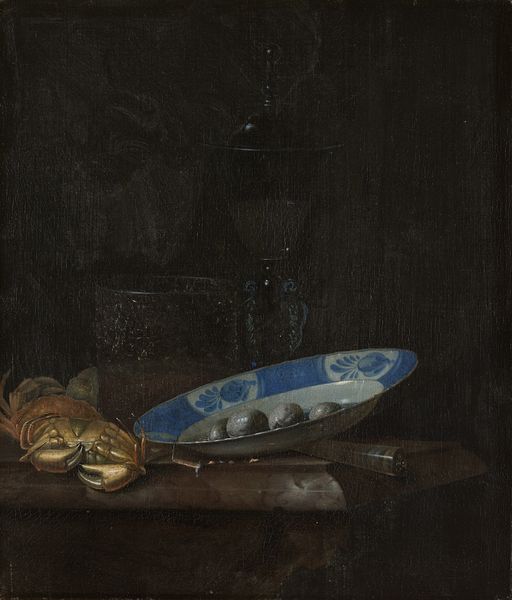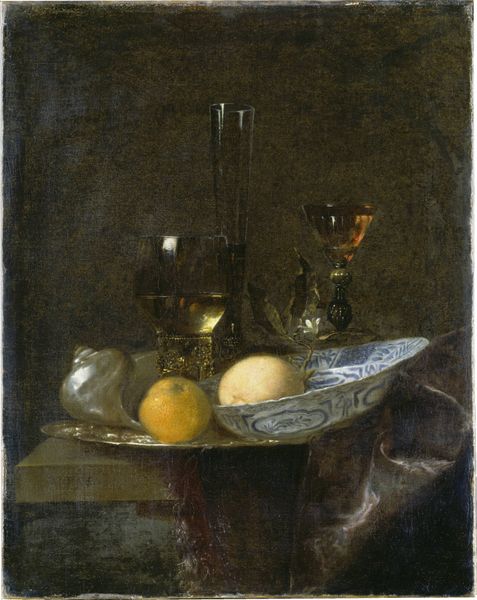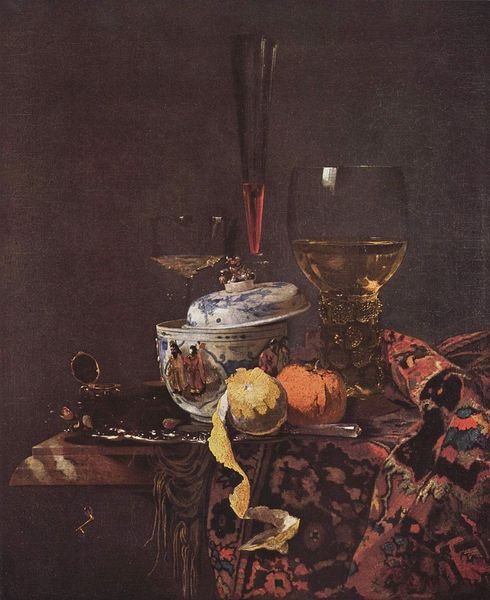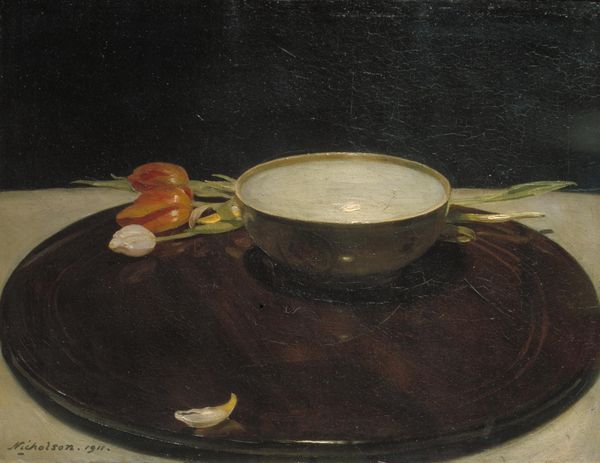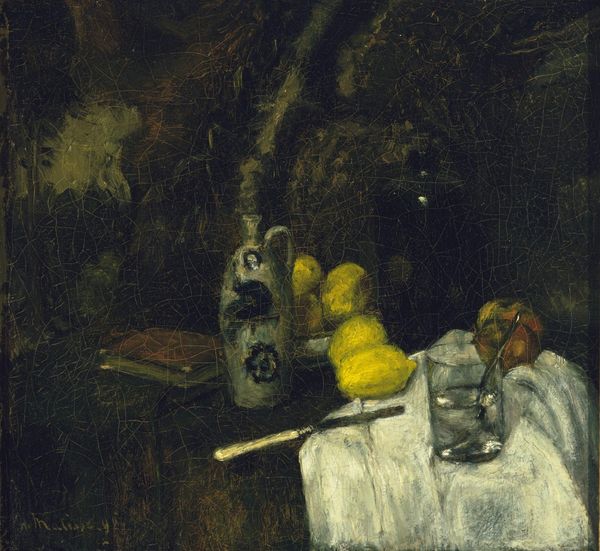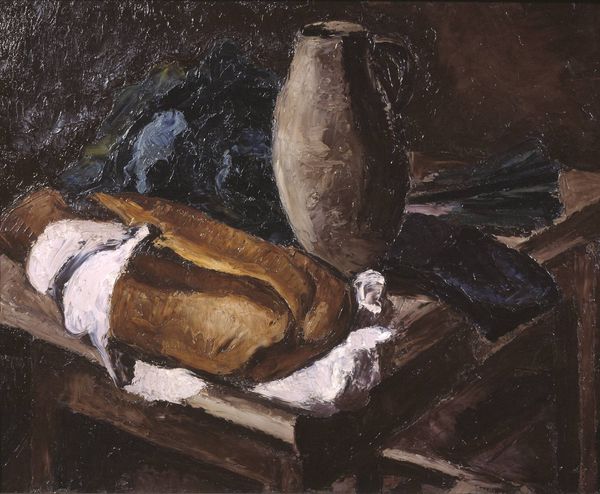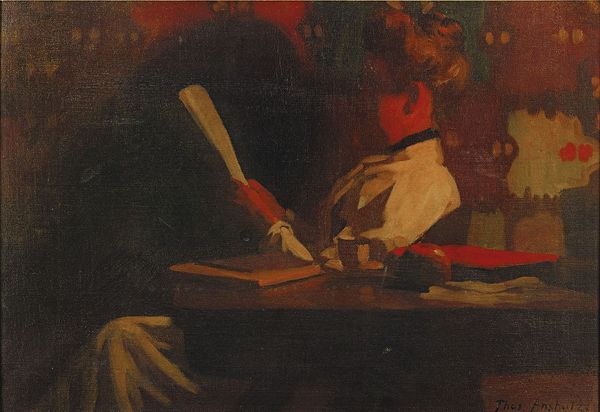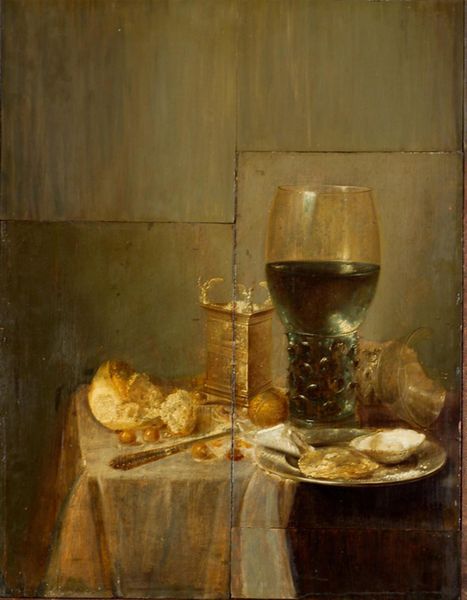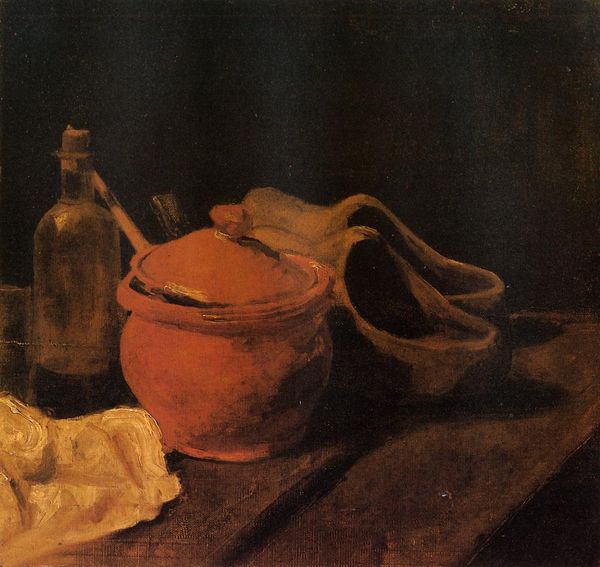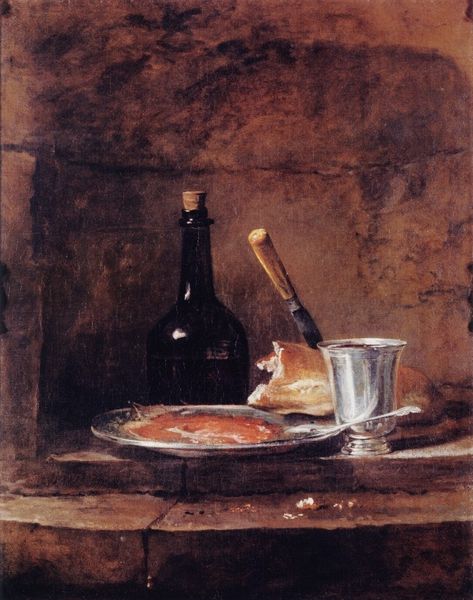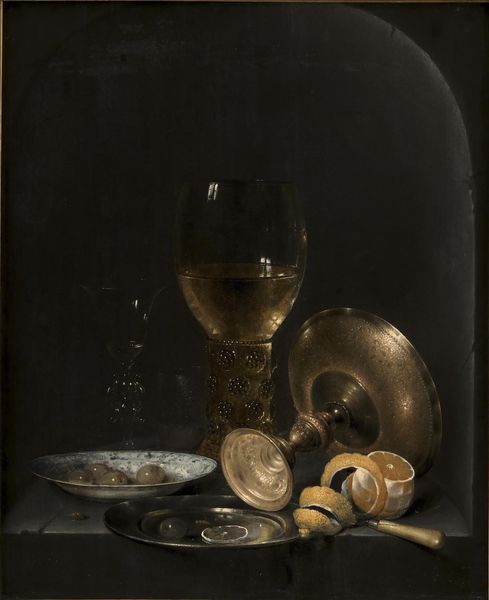
Copyright: Public domain US
Curator: Welcome! Before us hangs Henri Matisse's "Still Life with Earthen Pot," created in 1892. It is rendered with oil paint. Editor: Moody, isn’t it? Almost somber. The way the light catches the edge of the pot makes me think of kitchens and whispered secrets. Curator: Given its time of production, just think of the preparation! Each individual pigment had to be carefully ground, mixed with oil, and the canvas itself primed. Compare it to how easy it is for contemporary painters to produce an artwork using prefabricated acrylic paints. Editor: Yes, there’s a raw quality there. You can almost feel Matisse’s hand shaping those colors. What is it about humble objects depicted with such care, the intimate gathering of household utensils in paint? Is there not such artistry in how Matisse treats the texture and volume? Curator: It does ask us to consider the value of everyday objects, and their function within a household. Even the simple arrangement presents a form of domestic labor and order. Notice the relationship of objects to one another; from earthen pot to metal spoon, everything is made and produced and served a purpose for its historical moment and location. Editor: I like that you frame these items in this still life in the light of domestic objects and not “lesser than” objects of art. The still life has that intimacy. That brass candlestick is probably my favorite part, its gleaming presence. You could just pick it up. Imagine all of the daily work that was assisted by the quiet candle. Curator: Absolutely. By giving these otherwise ignored aspects our focus, Matisse pushes against established academic painting hierarchy, inviting a fresh interpretation that also includes appreciation for labor that exists at the intersections of class, artistic practice, and domesticity. Editor: Well, now I’m going to go home and look at my kitchen tools in a totally different light. There's value in noticing beauty in mundane things. Thank you for calling my attention to such an object, and especially for prompting these ideas! Curator: Likewise. Considering production and social history gives artworks additional weight, particularly at this still life, an early and pivotal example by Matisse.
Comments
No comments
Be the first to comment and join the conversation on the ultimate creative platform.

